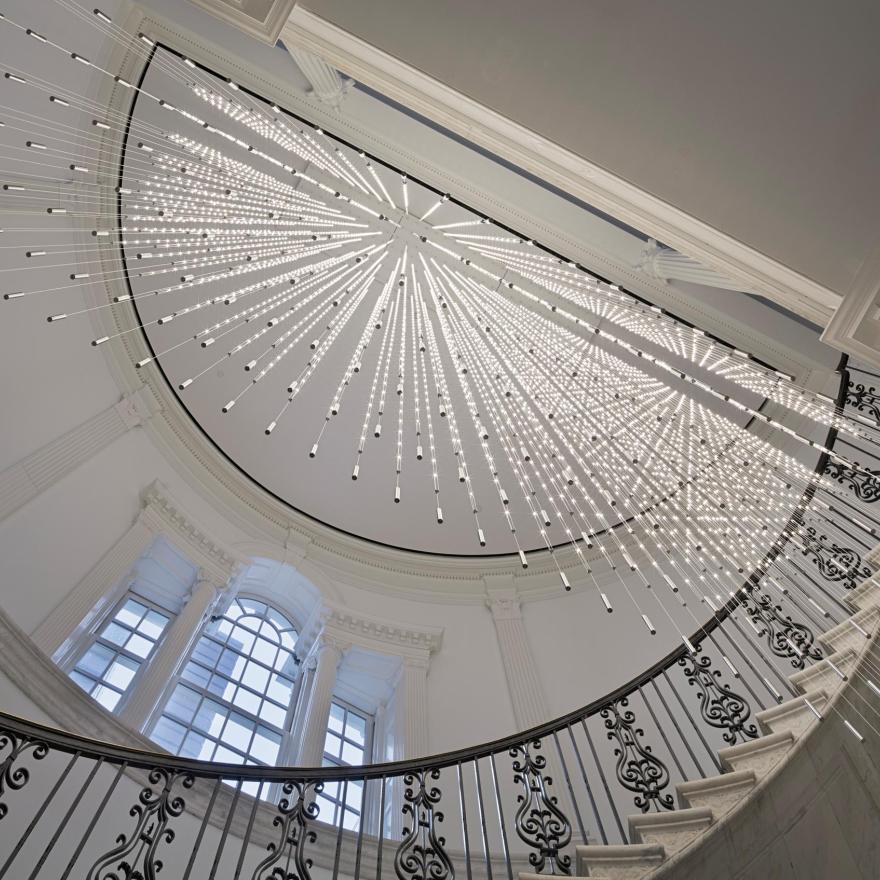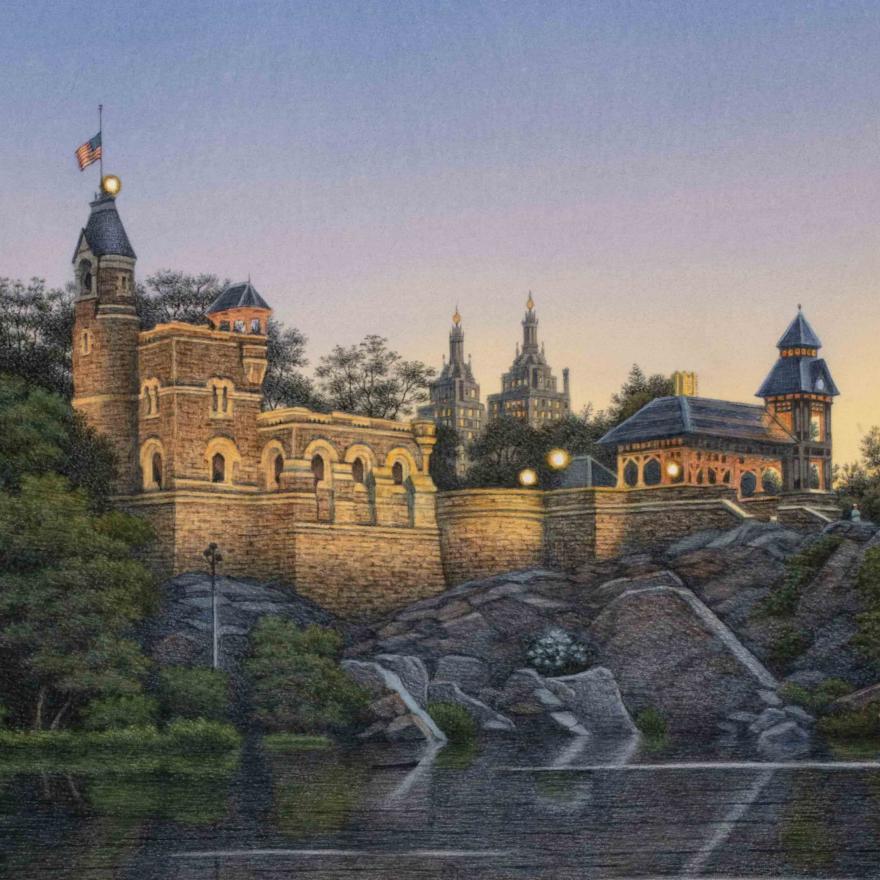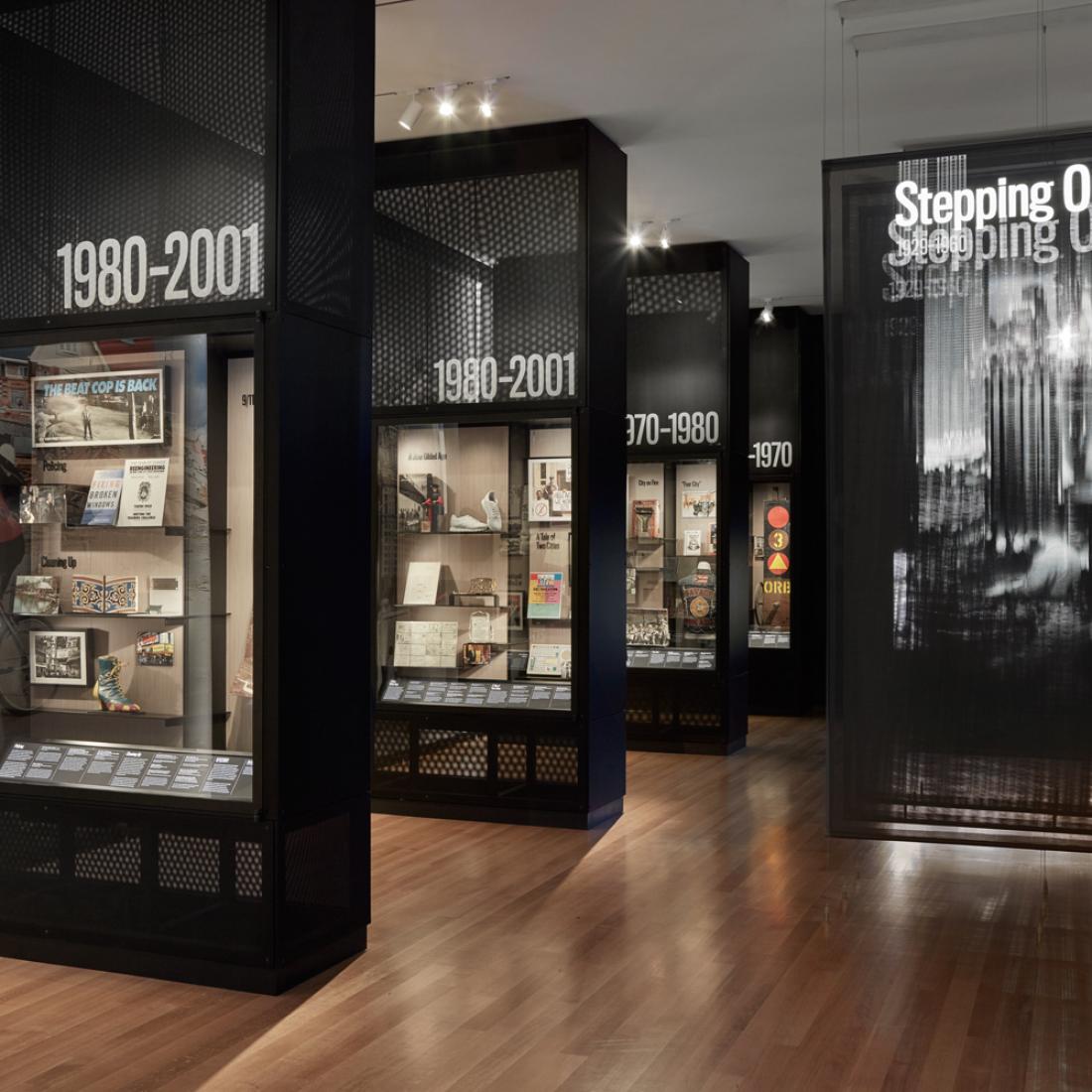
The exhibit/museum that I visited was the Museum of the City of New York. The Museum of the City of New York is a history and art museum in Manhattan, New York City, New York. It was founded by Henry Collins Brown, in 1923 to preserve and present the history of New York City, and its people.

This is the Starlight (Hanging Grid II). It is a light installation at the Museum of the City of New York (MCNY) that’s suspended above the Rotunda’s sweeping circular staircase. The installation is a 3-dimensional grid of 5,283 LED lights that create star patterns that change one’s perception and form perforated veils to classical architecture.
The installation was created by Cooper Joseph Studio as part of a $90-million restoration and expansion project for the museum’s 1932 Neo-Georgian landmark building. The installation’s goals include:
- Changing public perception to show the museum’s present relevance
- Increasing the efficiency of operations and encouraging the use of the monumental stair instead of the elevators
The installation is 22 feet tall by 15 feet wide by 3 feet deep and is composed of 219 “vines” of three cables, each with a series of triangular circuit boards with LEDs on the top and bottom. The installation uses state-of-the-art technology needs minimal energy and generates virtually no heat. I chose this piece because it was the first thing that I noticed when entering the building.

This piece is Four Seasons of Central Park Watercolors.
In this series, Brosen captures the beauty and essence of Central Park throughout the changing seasons. Each painting likely portrays different areas or landmarks within the park, showcasing the transformation of the landscape from spring blooms to summer greenery, autumn foliage, and winter snowscapes.
Brosen’s meticulous attention to detail and his mastery of watercolor techniques bring Central Park to life on paper, evoking a sense of time and place for viewers. His use of light, color, and composition creates atmospheric and immersive scenes that invite viewers to experience the park’s natural beauty and architectural splendor in all its seasonal glory.
The “Four Seasons of Central Park Watercolors” series exemplifies Brosen’s talent for capturing the charm and character of urban environments, offering viewers a unique perspective on one of New York City’s most iconic landmarks across the changing seasons.
A native New Yorker, Frederick Brosen studied at the City College of New York, the Art Students League, and the Pratt Institute. His work is included in museum collections across the country, including The Metropolitan Museum of Art, the New York Historical Society, the Knoxville Museum of Art, the Frye Museum in Seattle, and the Museum of the City of New York, and in many private collections. He has taught at several prominent art schools, including Pratt Institute, the National Academy of Design, Lehman College, and currently at the Art Students League of New York. I chose this because of my interest in nature which the painting encapsulates.

This final part of the museum is probably my favorite. This is the New York at its core exhibit. New York at Its Core is a permanent exhibition at the Museum of the City of New York that tells the city’s 400-year history through more than 450 objects and images. The exhibition is organized around four themes: money, density, diversity, and creativity. It features the city’s “big personalities,” such as Alexander Hamilton, Walt Whitman, Emma Goldman, and Jay Z, as well as lesser-known figures like Lenape chieftain Penhawitz and Susie Rocco. The exhibition also includes animals that have shaped the city’s economic and daily life, such as pigs, beavers, and oysters.
The exhibition is spread across three multi-media galleries on the first floor: Port City, 1609-1898; World City, 1898-2012; and Future City Lab. The galleries feature analog displays and immersive media, including a large animated map that presents data on economic opportunity, inclusivity, housing, transportation, and climate change. Visitors can also create their city and experience it on a large media wall.
The exhibition was designed by Pentagram, with architecture by Studio Joseph and interactive media by Local Projects. I chose this exhibit because it offers a dynamic and engaging exploration of the city’s history, culture, and identity, inviting visitors to reflect on the past, present, and future of one of the world’s most dynamic and influential urban centers.



